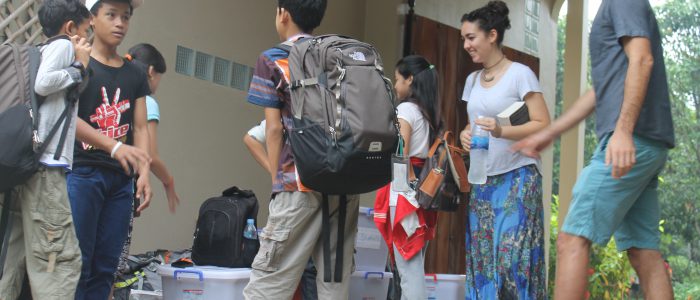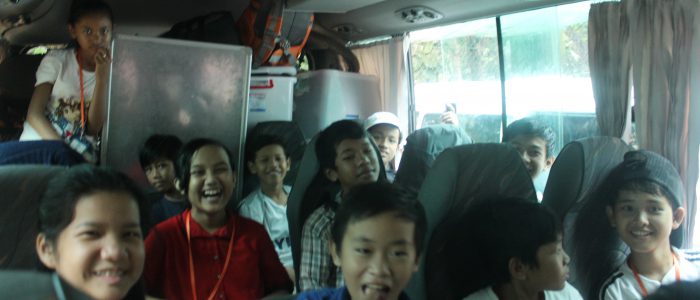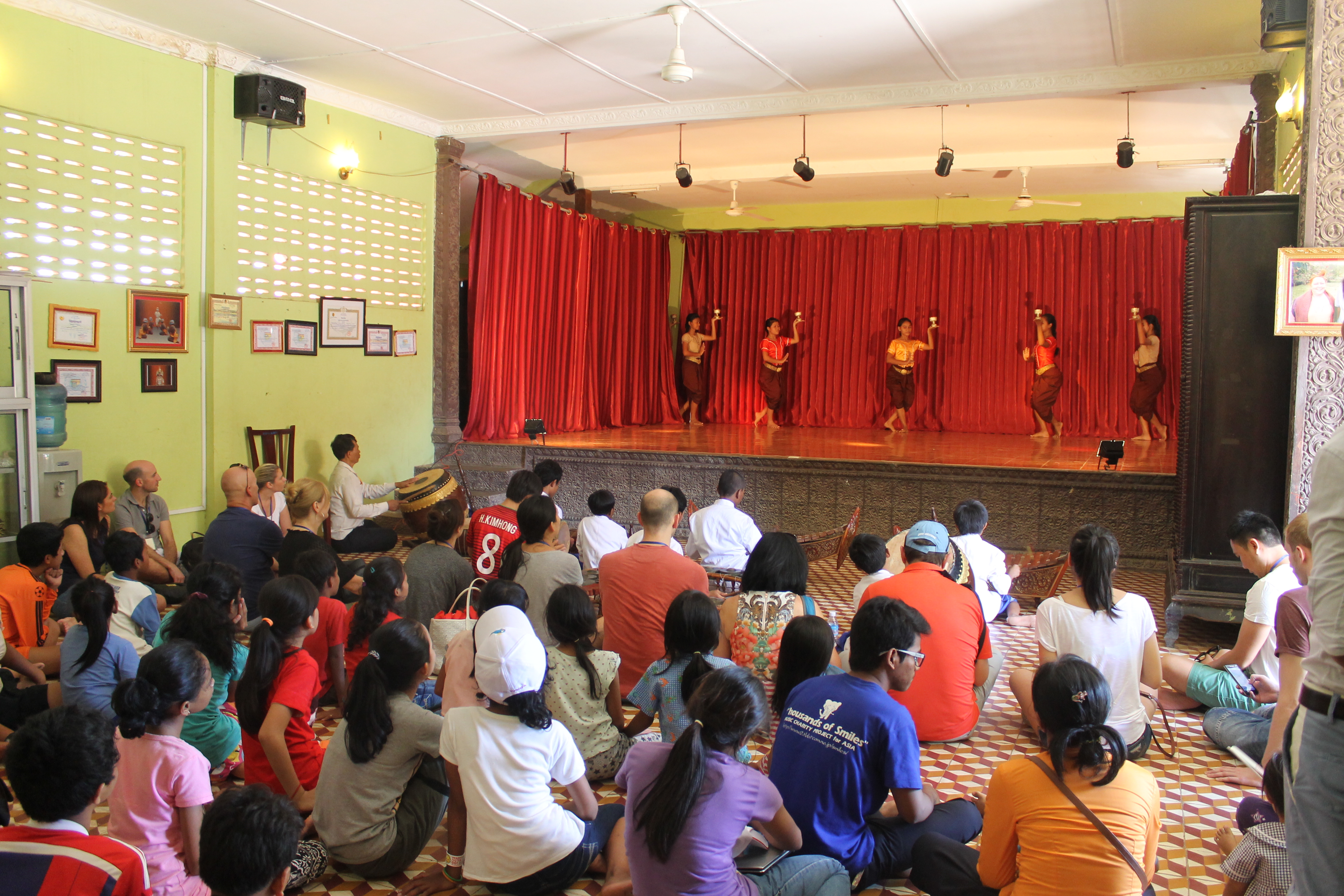This is the first time that we created our school yearbook so we decide to create one exploration doing about yearbook. In this class have six original students and two facilitators. In the first week we kind of bring up some ideas about the layout of the book and the title of the book. We had borrowed some yearbook from other school to see what their layout look like. Second week we start to write some activities and curricular in Liger such as Essentials, Expertise, Explorations, After School Extensions and Extracurricular on weekend. When we finished the writing we send it to our facilitators and they will edit and add some comment for us. Then we start to design the layout of our yearbook. We were working on the cover and some curricular in InDesign. When the exploration had ended we not yet finished the whole book so we decided to continue this project on other time. So the second time we did this now we have 11 students working on it. We had fished almost all the layout of the book and we going to print it soon and each of the Liger students we get one of our book. Our goal of this yearbook is to make our students remember what they have done in the past and look how they different when they were young and at the future.
English Pronunciation
In Liger we have one curriculum called Expertise and we learn in this curriculum for being the expert of something. One of my expertise is English pronunciation, I learn this lesson because I want to improve my English. In this class we have three things to work on first is speak slowly, second speak loudly and third speak clearly to speak English as well as I can because English isn’t my first language. In the first week we chose a song in English to listen in a small team of two students then, learn how to sing and pronounces the words clearly. Then we go back the big group and sing the song as the same as the singer as we can and pronounce the words clearly. The next week we have the paragraph in English and we divided into team again and we share the speech in the small team than we stand up and read our speech out loud to the big team. Then we start to learn the specific words like Australia and Hospital and we want to put the stress in the right syllable. Now I feel like I had improved my English and I felt really proud of myself.
STEM Project-based learning
STEM Project-Based Learning exploration is the following of Project-Base Learning (PBL). We have been working on our project and we want to implement our PBL curriculum to the government high school. In class we divided into two team one focus on PBL and one focus on STEM. We have created four projects to teach the government high school teachers for them to teach their students the first projects is biology; second physic; third history and last woman right. Our group were working with the teachers from two high schools, Chbar Ampov high school and Kratie Krong high school. Our first trip we went to Kratie Krong high school to train their teachers about the four topics. When we when there we were camping on the beach on Koh Truong and we have some fun at there. Also we want to follow up with the student from both schools so we went to their school again to see their students do their presentation and their final product of our PBL curriculum. After that we went to Kratie again to see the students in the Kratie Krong high school do their presentations. For the two high schools of their working hard and try our project we have some certificate that sign from the ministry. At last we take the tour to see the dolphin and go to 100 Pillars Pagoda.
Project-based Learning
My exploration called Project-based learning (PBL) and it is a teaching strategy to make students gain their knowledge and skill by working in a period of time and to involved in complicated questions problems or challenges. In class we have learned about PBL in Cambodia and in the Western part of the world. We also learned different subject in PBL and trying to research the high schools in Cambodia that have PBL in their curriculums. Our group also went to two high schools in Phnom Penh one is Chea Sim Chom Reun Roth and another called Russey Keo high school. We have interviewed with the teachers and the students in their school about PBL and what is their current curriculums. When we came back we have two main ideas that what we can do with the high school. The two main ideas is about water filter and waste management. We have planed those ideas for two week for the Russey Keo high school students to learn and then we went to the Russey Keo high school again. We show them the items that we have and let them discuss in team. My group is about wastes management and we focus on separate the wastes properly. First we introduce ourself then we show them our video about the impacts of wastes to the environment. We also told them to find out what is their problem about waste in their school and in the community. Then they go out to collect some waste that can use to recycle to make other thing that useful for them. When they finish their work we have one group call Artist’s of Cambodian judges the high school product and their teamwork and they bring some awards for the winner. Also we asked them that they want to do this project or not and they said yes so we told them that we will go back and look at their final product and their presentation for us. When we come back to school we did our reflection and we want to follow up with them so we create some ideas that we can celebrate with them and we want to give some gifts to them for their hard works.
Desalination Water
My Independent Discovery is to desalinate salty water to drinking water because there a lot of salty water and not enough drinking water. Desalination salty water to drinking water is to move salty water into the drinking water. Some of the desalination are filtering the minerals, interesting rocks and other types of crystals. I want to make this discovery because on earth there are not enough clean water for people and animal to drink. In the first three weeks I learn how to make the model of the desalinate machine and learn the basics of how it works. Then I take some materials to do a evaporation desalinate using evaporated water. First I don’t have any salt water so to do this I need to mix the water with the salt to make it salty then I serve it to make it mix together. Then I use the black plastic bags to cover the top and put the plate in the middle of the container that I use to put salty water. I tie the plastic to the container and put some rock to make it face down for the fresh water go into the plate. After a week I use the tasting machine call TDS EC to check my experiment but my experiment doesn’t work at all. I try many time but it can’t so I went back to check the basic of it again. I want to help the world with my idea.
Ministry Day
On Tuesday 12, January 2016 it was a Ministry Day in Liger Learning Center (LLC). In this day the Minister of Ministry of Education, Youth and Sport and other high school directors in Phnom Penh about 60 people were coming to Liger for doing work shop. First, at 8 AM our Liger director, Dominic Sharpe have given a speech to the Minister and other school directors. Dom have spoken a lot of things about Liger after Dom finished his speech the Minister of Ministry of Education, Youth and Sport, Em Kuch give another speech to Liger and other school directors. After that we have divided the school directors and the minister into team. We have seven topic to present to them and my group is about Project-Based Learning. We start our presentation at about 8:30 AM and we have just 25 minutes to present each topic. When we hear the sound of the gong we it mean time to go to another group. After we finish 4 time of presentation we have a time to relax and have some snack about 10 minutes and then we continue our presentation to the visitors. In our Project-Based Learning team we have five examples that we want the high school on Cambodia to have such as Science Book, History Museum, Rube Goldberg, Discussion of Problem and Solution and Community Problem/Solution. After we present to all seven rounds all the school directors and the minister were having lunch. At the end we have a group picture will all the school directors and minister. It was the great day for everyone to share with the visitors. Also it can help to change the curriculum in the government schools in Cambodia.
Animals Guide in Cambodia
Animal Guide Exploration Description
Learning Facilitator: Jojo Hart
Dates: November 2014 – June 2015
In the Animal Guide exploration 13 students are researching, writing and illustrating a bilingual guide to Cambodian animals and ecosystems. Liger is collaborating with a NYC-based NGO called Art in a Box (AIB) to publish the book. Jojo leads the research and writing aspect while AIB leads the illustration aspect and publishes the final product. The book includes 87 vertebrate species and 7 ecosystems.
The goal of this exploration is that the The Guide to Cambodian Animals will be an attractive, accurate and well-written source of knowledge about Cambodian ecology and zoology that can be used in Cambodia as well as other parts of the world.
The project (November 2014 – June 2015) spans two explorations and a literacy block and incorporates many subjects including ecology, biology, geography, English literacy, Khmer literacy and art.
From November- March the 13 Animal Guide students conducted research by interviewing and emailing local conservationists, visiting ecosystems, and reading websites and books. During this first stage they learned how to recognize a reliable source, improved their interview skills, developed research and note-taking skills and amassed an impressive vocabulary.
From January – March, as the students finished their research, AIB led a 2-month course on watercolor painting. 36 Liger students, including the 13 animal guide students, worked hard to create vibrant watercolors of the species and ecosystems in the book. They learned how paint with freedom and expression.
Finally, from April – June the students used their research to write 1600-character descriptions of their species. At this stage in the project the students learned English grammar, practice new vocabulary and learned how to write concisely. We also built connections with mentors around the world, including a school in Poland, who helped edit students’ work. Since the Animal Guide will be bilingual, once the 13 Animal Guide students finished writing and editing the English descriptions, other Liger students worked with the Khmer teachers to translate it into Khmer.



